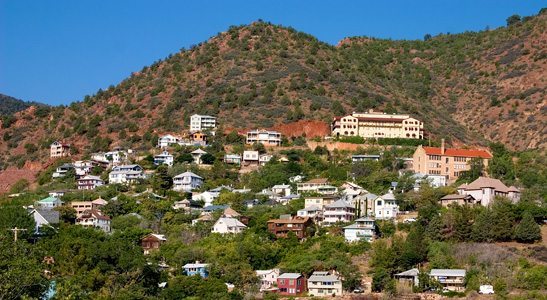Though home prices continue rising, things are still far from perfect in the Phoenix-area housing market. A new year-end report from the W. P. Carey School of Business at Arizona State University provides a 2012 summary of the numbers for Maricopa and Pinal counties, as well as some insight on what’s ahead:
* The median single-family-home sales price shot up almost 34 percent — $122,500 to $164,000 — from December 2011 to December 2012.
* The supply of homes for sale fell 6 percent from January 2012 to January 2013, with discounted, “distressed” supply down a whopping 42 percent.
* Foreclosures finally plummeted 51 percent from December 2011 to December 2012, signaling we are near the end of a terrible chapter in the Phoenix-area housing market.
Mike Orr, the report’s author, says things have dramatically changed in the Phoenix-area market over the past year or so. Prices have risen significantly since they reached a low point in September 2011.
“2012 was all about low inventory, which has been driving up home prices,” explains Orr, director of the Center for Real Estate Theory and Practice at the W. P. Carey School of Business. “Foreclosures and short sales have gone down, eliminating the sources of many cheap homes, so the more expensive types of transactions, like normal resales and new-home sales, went up. As a result, new-home construction, which was at rock bottom in 2011, also really came roaring back in 2012.”
The median single-family-home price in the Valley went up about 33.9 percent from December 2011 to December 2012, rising from $122,500 to $164,000. Realtors will note the average price per square foot went up 27.2 percent. The median townhouse/condominium price went up 42.7 percent, from $70,000 to $99,900.
“However, we expect to see that prices held steady or even fell slightly between December 2012 and January 2013,” says Orr. “Between Christmas and the Super Bowl is always a quiet time for home sales in Greater Phoenix, with ordinary home buyers much less active than average and investors continuing to concentrate on the lower price range.”
On the overall supply of homes for sale last year – Orr says inventory went down 6 percent from the beginning of January 2012 to the start of January 2013. Still, the supply began to bounce back toward the end of the year, increasing 13 percent in the fourth quarter. The supply of cheap, “distressed supply” plunged 42 percent over the year, as foreclosures and short sales fell. Overall sales activity also fell 12 percent for single-family homes and 13 percent for townhomes/condos from December to December.
“With prices moving substantially higher, it’s not surprising that buyer interest eased a little,” says Orr. “We still see multiple bids for many resale listings, but demand isn’t as strong as it was in spring 2012.”
Investor interest has dropped somewhat in recent months, after peaking in late summer. This means ordinary home buyers face less competition from investors’ all-cash offers. Still, all-cash purchases accounted for more than a third (35.5 percent) of the deals in Maricopa County in December. Some investment groups have started buying homes wholesale in bulk from other investors, since the market has become more competitive. Nevertheless, Orr asserts most investors are using their own money and not debt, so he doesn’t expect another housing bubble from this activity.
“Developers are also becoming more active, as bargains become tougher for the average buyer to find and those buyers turn to new-home construction,” says Orr. “Developers are stocking up on vacant lots – having purchased almost 2,300 of them, plus several tracts of undeveloped land, in December alone. However, the number of permits to build on the lots hasn’t shot up, so it looks like developers are trying to remain flexible, deciding whether to build or hold the land for the future.”
Foreclosure starts – homeowners receiving notice their lenders may foreclose in 90 days – are down 40 percent from December 2011 to December 2012. Completed foreclosures are down 51 percent.
Almost all areas of the Valley rebounded significantly in 2012. In fact, Wickenburg is the only city where the average price per square foot went down from December 2011 to December 2012.
Orr’s full report, including statistics, charts and a breakdown by different areas of the Valley, can be viewed at http://wpcarey.asu.edu/finance/real-estate/upload/Full-Report-201301.pdf. A podcast with more analysis from Orr is also available from knowWPCarey, the business school’s online resource and newsletter, at http://knowwpcarey.com/index.cfm?cid=13.




